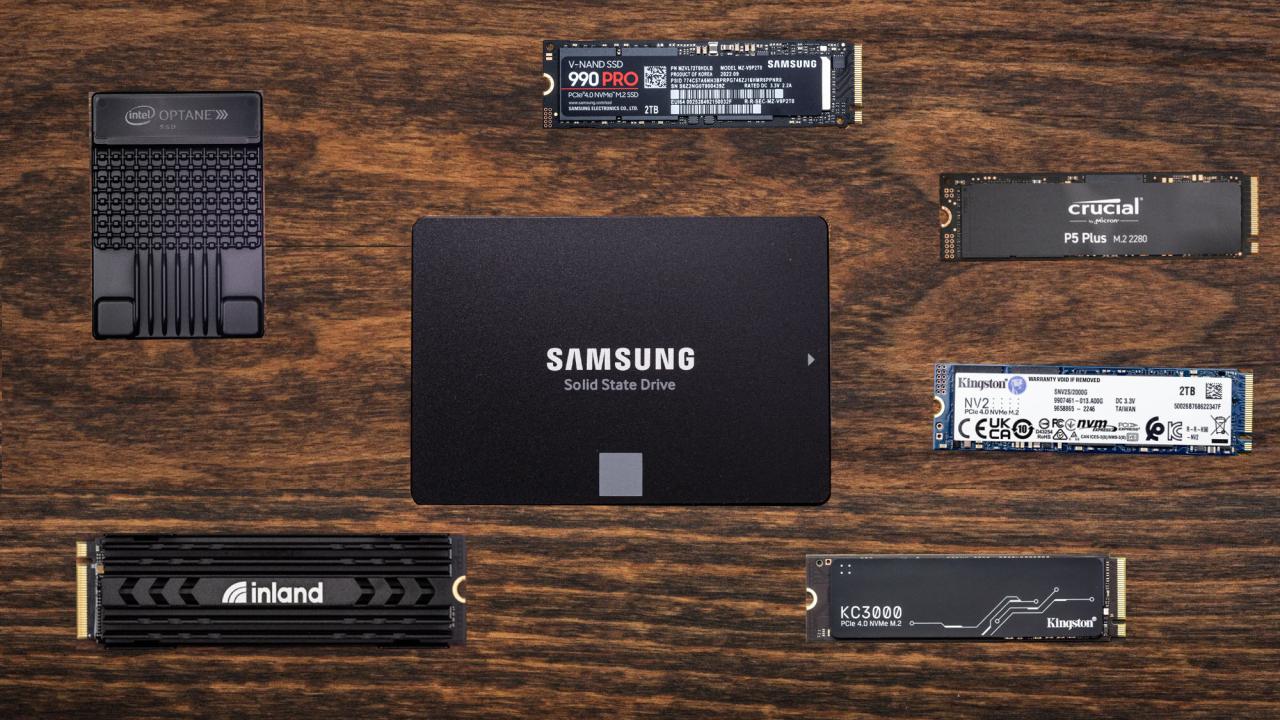Top 5 SSDs for Speed and Reliability in 2025
In 2025, solid-state drives (SSDs) have become more essential than ever. Whether you’re gaming, editing videos, running professional applications, or simply upgrading your laptop or desktop, a high-performance SSD can drastically improve speed, responsiveness, and overall system performance. But with dozens of models and specs on the market, choosing the right SSD can be overwhelming.
This guide narrows down the top five SSDs of 2025 based on speed, reliability, endurance, and overall value. Whether you’re a power user or just looking for the fastest boot times, these SSDs are some of the best options available right now.
Why SSDs Still Matter in 2025
With newer storage standards like PCIe 5.0 and advanced NAND technology, modern SSDs are faster, more durable, and more power-efficient than ever. Unlike traditional hard drives, SSDs offer:
-
Instant boot and load times
-
No moving parts (less prone to mechanical failure)
-
Lower power consumption
-
Greater resistance to shock and temperature
As software and games demand higher I/O performance, having the right SSD ensures your system stays fast and responsive even under heavy workloads.
1. Samsung 990 PRO with Heatsink (PCIe 4.0 NVMe)
Best For: Gamers, content creators, and professionals needing consistent high performance
The Samsung 990 PRO continues to be a top-tier PCIe 4.0 SSD in 2025, offering read speeds up to 7,450 MB/s and write speeds around 6,900 MB/s. While PCIe 5.0 drives are starting to gain traction, the 990 PRO still delivers excellent performance at a more reasonable price and with better thermal control.
Its integrated heatsink and Samsung Magician software help manage thermals and optimize performance for long rendering sessions, 3D workloads, and gaming marathons. The 990 PRO also supports AES 256-bit hardware encryption, making it suitable for enterprise users as well.
Key Specs:
-
Interface: PCIe 4.0 x4, NVMe 2.0
-
Read/Write Speed: Up to 7,450 / 6,900 MB/s
-
Capacities: 1TB, 2TB, 4TB
-
TBW (Terabytes Written): Up to 2,400 TBW for 2TB model
Pros:
-
Exceptional speed for a PCIe 4.0 SSD
-
Outstanding reliability and warranty
-
Low power consumption and thermal throttling resistance
Cons:
-
Pricier than some Gen 4 alternatives
-
Not PCIe 5.0
2. WD Black SN850X (PCIe 4.0 NVMe)
Best For: High-performance gaming, PC enthusiasts
Western Digital has consistently delivered reliable and fast storage, and the WD Black SN850X remains one of the most trusted SSDs in 2025. Built with gamers in mind, this drive is optimized for fast load times, seamless game streaming, and massive texture files. With speeds up to 7,300 MB/s, it competes closely with Samsung’s offerings.
The SN850X also features Game Mode 2.0, which reduces latency and improves in-game asset streaming. It’s compatible with PlayStation 5 (with heatsink version) and high-end PC builds.
Key Specs:
-
Interface: PCIe 4.0 x4, NVMe 1.4
-
Read/Write Speed: Up to 7,300 / 6,300 MB/s
-
Capacities: 1TB, 2TB, 4TB
-
TBW: Up to 2,400 TBW (2TB model)
Pros:
-
Built-in gaming features
-
Competitive pricing for high-speed SSD
-
PlayStation 5 compatible
Cons:
-
Heatsink model slightly more expensive
-
Not as energy-efficient under load
3. Crucial T700 (PCIe 5.0 NVMe)
Best For: Early adopters of PCIe 5.0, heavy multitaskers, workstation users
Crucial’s T700 is one of the first widely available PCIe 5.0 SSDs and represents the cutting edge in consumer SSD technology. With blistering speeds of over 12,000 MB/s for reads and 11,800 MB/s for writes, it sets a new benchmark. This level of speed is ideal for tasks like 8K video editing, real-time simulations, or handling enormous data sets.
While Gen 5 SSDs require motherboards that support PCIe 5.0, users with compatible systems will see a significant performance leap—especially during file transfers and caching operations.
Key Specs:
-
Interface: PCIe 5.0 x4, NVMe 2.0
-
Read/Write Speed: Up to 12,400 / 11,800 MB/s
-
Capacities: 1TB, 2TB, 4TB
-
TBW: Up to 2,400 TBW
Pros:
-
Fastest consumer SSD available in 2025
-
Great for workstation-grade workflows
-
Backed by Micron’s proven NAND quality
Cons:
-
Runs hot—needs a heatsink or active cooling
-
Expensive and requires Gen 5 motherboard
4. Sabrent Rocket 4 Plus-G (PCIe 4.0 NVMe)
Best For: Streamers, multitaskers, and casual creators looking for speed on a budget
Sabrent may not have the brand prestige of Samsung or WD, but their Rocket 4 Plus-G model is turning heads for its excellent price-to-performance ratio. Designed with DirectStorage and gaming optimizations, this SSD performs well in both sequential and random workloads.
Thanks to Sabrent’s firmware tuning and stable hardware, it holds up in long sessions of 4K editing or multitasking without significant slowdowns.
Key Specs:
-
Interface: PCIe 4.0 x4, NVMe 1.4
-
Read/Write Speed: Up to 7,400 / 6,600 MB/s
-
Capacities: 1TB, 2TB, 4TB
-
TBW: Around 1,400 TBW (2TB model)
Pros:
-
Affordable compared to flagship SSDs
-
Optimized for gaming and DirectStorage
-
Consistent performance in mixed workloads
Cons:
-
Software support not as polished
-
Limited availability in some regions
5. SK hynix Platinum P41 (PCIe 4.0 NVMe)
Best For: Everyday professionals, laptop users, and long-term reliability
SK hynix may not be a household name for SSDs, but they’re a respected name in the memory industry and have quietly built one of the most efficient and reliable SSDs on the market. The Platinum P41 offers fantastic power efficiency and consistent performance, making it ideal for laptops or quiet PC builds.
It’s particularly well-balanced, delivering good sustained write speeds without thermal throttling or excessive power draw, which is key for creators working on laptops without active cooling.
Key Specs:
-
Interface: PCIe 4.0 x4, NVMe 1.4
-
Read/Write Speed: Up to 7,000 / 6,500 MB/s
-
Capacities: 500GB, 1TB, 2TB
-
TBW: Around 1,200 TBW (2TB)
Pros:
-
Exceptional power efficiency
-
Highly reliable NAND and controller
-
Great for quiet and portable systems
Cons:
-
Limited to PCIe 4.0
-
Fewer features for gamers and enthusiasts
How to Choose the Right SSD for You
While all five SSDs above are excellent choices in 2025, your final decision should be guided by:
-
Purpose: Gamers and streamers should lean toward the WD Black SN850X or Sabrent Rocket 4 Plus-G. Professional creators should consider the Samsung 990 PRO or Crucial T700.
-
System Compatibility: Ensure your motherboard supports PCIe 4.0 or PCIe 5.0 before buying. Older systems may not benefit fully from newer drives.
-
Budget: Higher-end SSDs like the Crucial T700 offer blazing speed but come at a premium. Budget-conscious users still get great performance from Sabrent or SK hynix.
-
Thermals and Power: Laptops and compact builds need efficient SSDs like the Platinum P41. Desktop users with good airflow can go for higher-performing models.

Final Thoughts
The SSD landscape in 2025 is fast-moving and filled with excellent options. Whether you’re chasing record-breaking speeds, maximum reliability, or the best value per dollar, there’s an SSD that fits your needs. The five options listed here have all earned their spots through a combination of real-world performance, long-term reliability, and user trust. As storage technology continues to evolve, investing in a quality SSD today ensures your system remains fast, responsive, and future-proof for years to come.
If you’d like a custom recommendation based on your use case or system specs, feel free to ask—I’m here to help.

With years of experience in technology and software, John leads our content strategy, ensuring high-quality and informative articles about Windows, system optimization, and software updates.











![7 Common Windows 10 Errors And How To Fix Them [2020] - TechDipper](https://windows12download.com/wp-content/uploads/2023/04/Windows-10-Errors-300x169.jpg)

Post Comment
You must be logged in to post a comment.